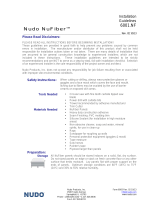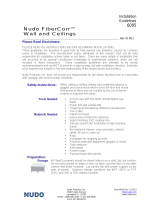
Installation Instructions and
Guidelines for Glasliner FRP Panels
Read all instructions before installation. Glasliner FRP panels should only be installed over solid wall
surfaces (standard drywall, standard plywood, standard OSB, cement board, cement, etc.) Consult your
adhesive manufacturer for recommendations for non-standard substrates.
Inspection, Storage, and Preparation
Panels should be inspected in a well lit area promptly upon receipt to ensure material suitability. Do not
store panels outdoors. Panels should only be stored in a dry area. Promptly unwrap and remove panels from
skid and stack on a flat, dry surface. Ensure that the climate of the room, the panels, and the adhesive are all
above 50°F before and during installation. Avoid large temperature changes for at least 24 hours after
installation is complete. Normal fire-safety precautions should be taken during storage and installation of
panels.
Panels are inspected for defects prior to shipment, and should be re-inspected by the installer prior to
installation. If panels are not acceptable, contact Glasteel customer service prior to installation. Glasteel is
not responsible for installation or removal costs of unacceptable panels.
Tools
Panels can be cut using power saws with a fine carbide tip blade or masonry blade. Panels may be drilled for
fastening with a metal drill bit. Masonry bits are recommended when drilling in concrete.
Caution: Protect eyes with goggles and cover mouth with a filter mask when cutting Glasliner panels.
Use a trowel recommended by the adhesive manufacturer to apply adhesive to the back side of the panel.
A laminate roller is recommended to remove air pockets and ensure adhesion of the surface area.
Adhesives & Fasteners
The use of a specifically formulated FRP adhesive is recommended when installing Glasliner FRP panels.
Follow the adhesive manufacturer’s instructions carefully. Many adhesives are flammable and some may
not be compatible with paneling.
Glasliner FRP panels may be successfully installed using only adhesive on typical even surfaces. Installation
over uneven surfaces using adhesive only may cause adhesion failure.
Mechanical fasteners may be used in certain non-typical applications. If mechanical fasteners are used, they
should be non-corroding (i.e. plastic pin rivets, chrome pin rivets, one piece nylon rivets, and stainless
screws, etc.). Follow the fastener manufacturer’s instructions carefully.










